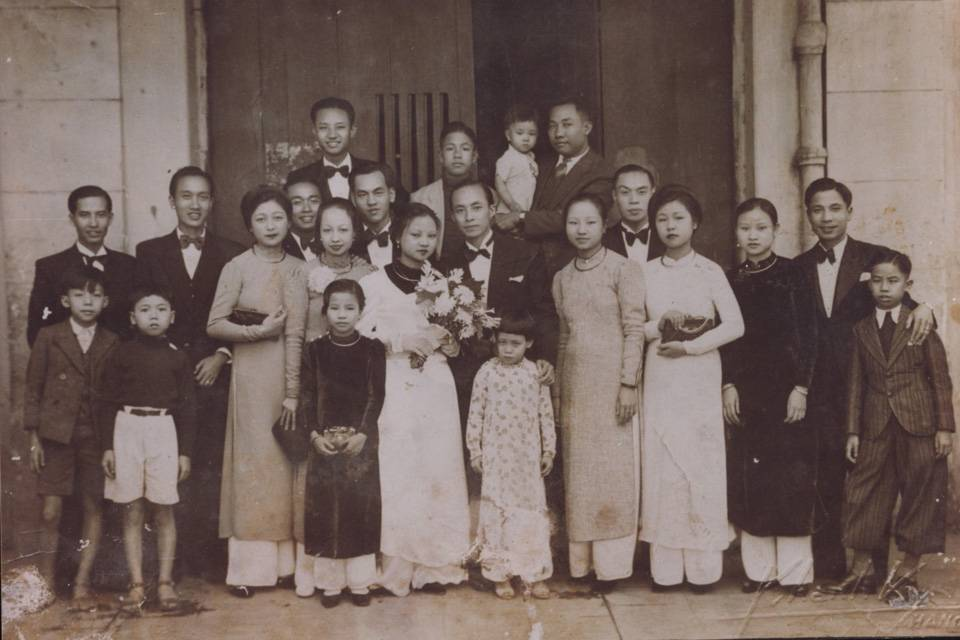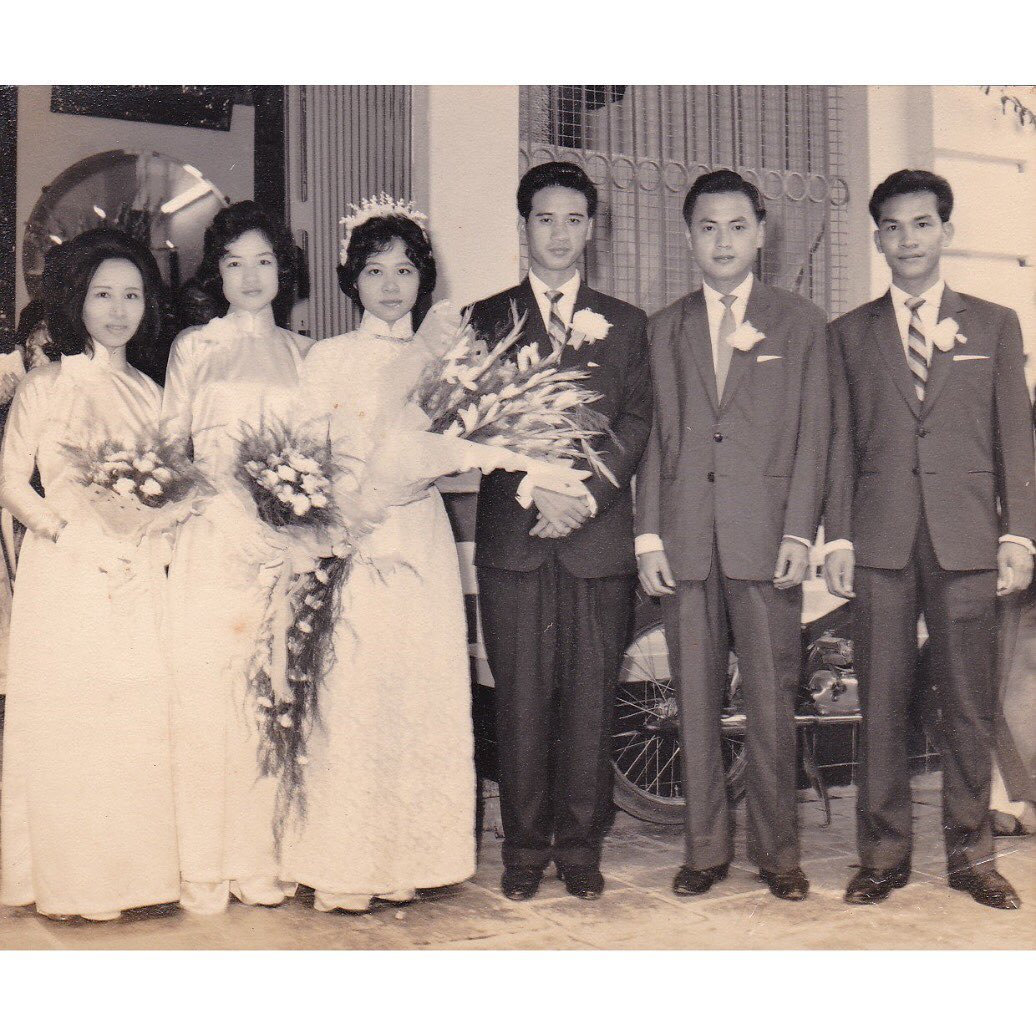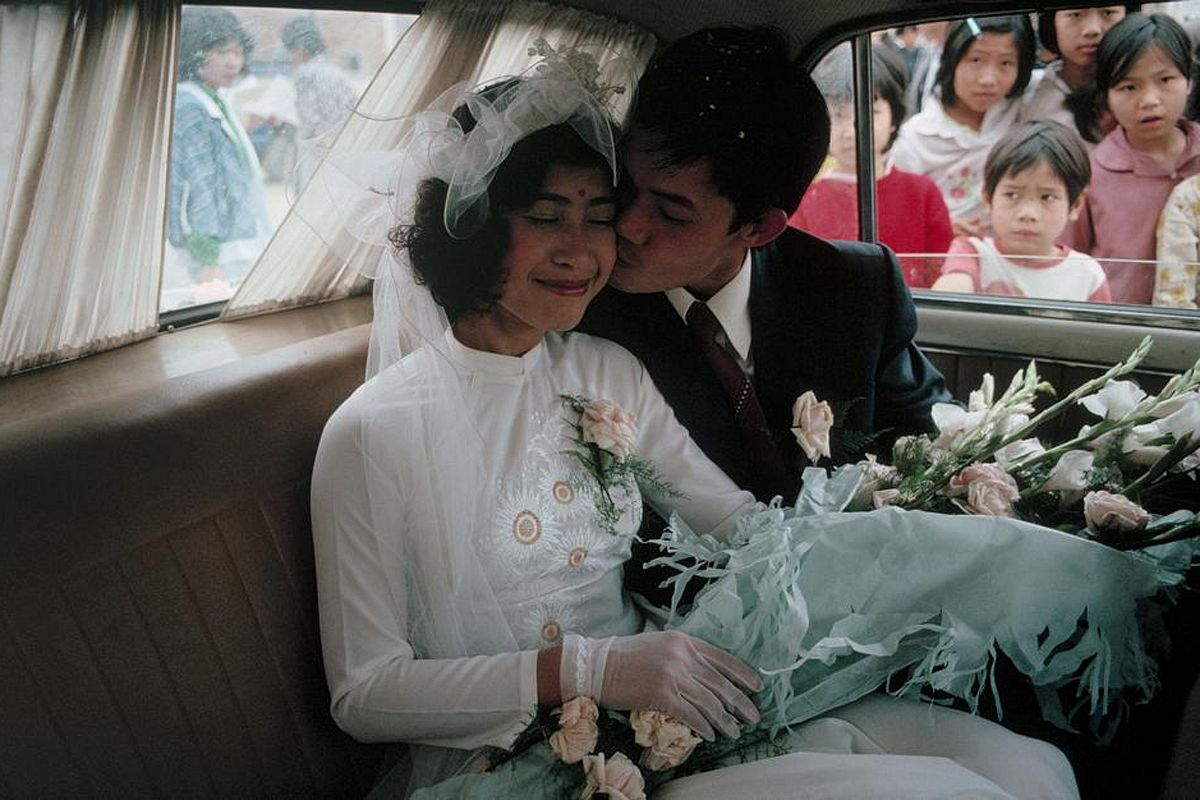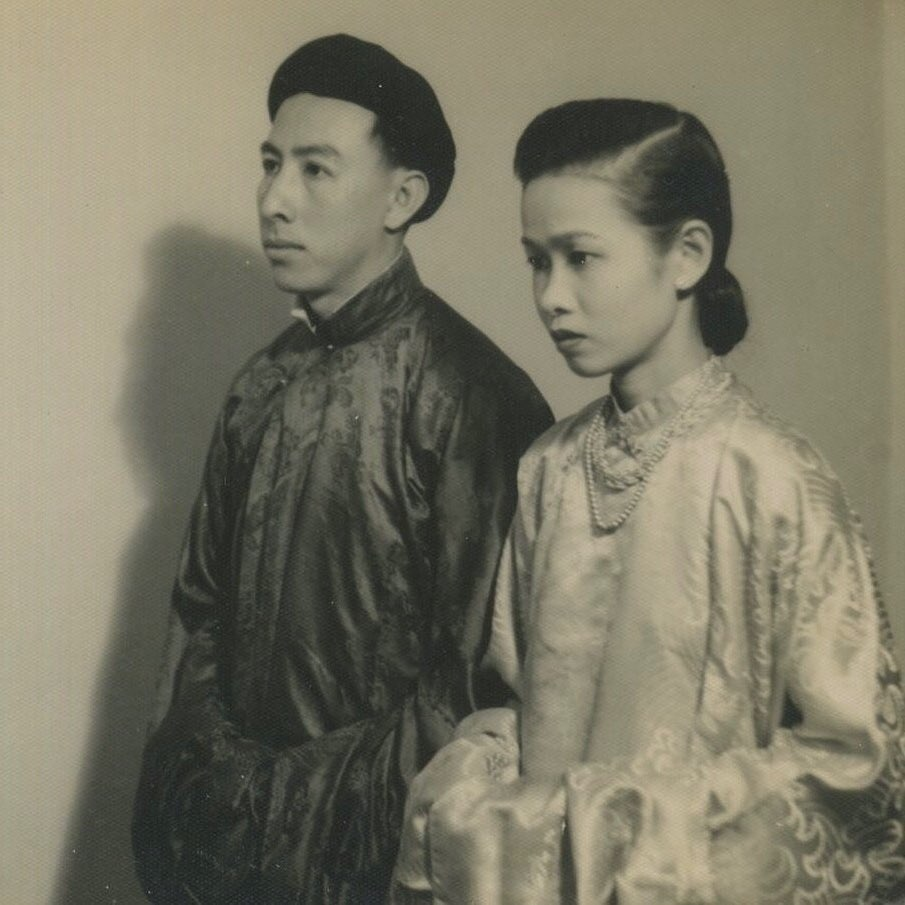
Vietnamese Wedding Gowns from The Past
Wedding dresses are often taken very seriously because getting married is always a holiday. The history of Vietnamese rehabilitation is also fascinating.
 Weddings of middle-class families in the North during the French colonial period.
Weddings of middle-class families in the North during the French colonial period.
Clothing emerged as a necessity for survival against the harshness of nature throughout human history. Clothing has evolved into a language that expresses many aspects of life. Dress, in particular, is a special costume that marks the path of maturity in each individual's life cycle. Getting married is always a holiday in any era, so wedding attire is often highly valued in many cultures.
 Weddings of upper-class families in the North during the French colonial period.
Weddings of upper-class families in the North during the French colonial period.
Many historical sources show that beginning with the Hùng Vương dynasty, ancient Vietnamese residents created a wide range of jewelry, hats, and hairstyles... Men's and women's costumes are simulated on daggers, including multi-layered shirts, wrap skirts, skirt leggings, and chauffeurs (waistbands) that are squeezed from waist down to legs... Problem towels, hair in a high bun or cut short to loosen, and wearing a lot of brass jewelry, gemstones such as round earrings, bracelets, rattles...
 The scene of a couple picking up their bride in Hanoi.
The scene of a couple picking up their bride in Hanoi.
Although the wedding ceremony is not depicted on the Dong Son bronze, we can imagine the ancient Vietnamese wedding costume from the festive costume. The ancient wedding dresses were more or less different, carrying on the cultural traditions of the Hung King era. But, whether aristocratic or popular, the highlight of the dress is fussy, luxurious, bright colors, and bold yin and yang philosophy. The color scheme principle is uniformly adhered to in terms of "brightness-darkness" or the mindset of "having couples" expressed on both shirts, skirts, and pants... Northern brides frequently wear layered "tangled seven, tangled three" gowns. Inside was a peach bib, wearing a black oak dress or field skirt, wearing a belt, hair in a chicken tail, a black velvet scarf head, on a scarf with gold or silver butterflies. During the ceremony, the bride wears a three-tiered hat as a charm, and her legs are open on her heels. Earrings, rings, and gold toruses worn on the wrist are popular pieces of jewelry...
 Hue wedding in traditional Vietnamese attire.
Hue wedding in traditional Vietnamese attire.
In the Central region, the bride also wears a multi-layered shirt, but it is red or pink in the middle, blue or sparse in the middle, and black or sparse on the outside. Hair combed over, bunted behind the neck, neck adorned with chains or beads, hands adorned with toruses or shaking gold... Rabbi Christoforo Borri, who came to Thuan Hoa in 1618-1622, described Hue brides during Tet or wedding ceremonies in The Inner City "wore up to 5 or 6 plain silk dresses that overlapped and were all different colors. The first one toppled to the ground, dragging so solemnly, skillfully, and solemnly that the tip of the toe was obscured (...). And on their bodies, they are crossed like chessboards of different colors, with a very fine and thin chiffon sheet on top that allows one to see all the colorful colors like a joyful and graceful spring..." He also describes men as "flaunting their harmonious colors whenever they go out on the street, if there is a light wind blowing from the inside, it can actually be said that peacocks spinning to show off their beautiful colors." And, to this day, this beautiful and luxurious type of clothing has become a way of life for people of color.
 Hue wedding in traditional Vietnamese attire.
Hue wedding in traditional Vietnamese attire.
Southern brides wear less layered shirts, primarily brocade tunics, black trousers, and embroidered comedy due to the hot weather. Combed over hair, neatly bunted and combed with decoy, gold, silver, or brooch, brooch head with gold or silver butterfly decoration... The groom wears a simpler outfit, usually, a black scarf, white silk pants, a black blouse or brocade shirt sewn in the style of a tunic, buttoned diagonally on the chest. In some places, the groom also wears a briefcase with a white tunic inside, a double-lined shirt or blue brocade shirt outside, and Gia Dinh shoes on his feet. The outside of the blue robe is also worn by the groom on both sides during the dodder ceremony, the family ceremony, or the parents' prostration...
Later, along with the cross-cultural, wedding gowns in our country were almost entirely imported from Europe, but the rituals remained largely unchanged. The bride and groom's lives have turned a new page of maturity the day they put on their wedding gowns, leading a small family with great obligations and responsibilities to the family and society. That is also a rule, a continuation of each person's and generation's life cycle.
Source: PhD: Lê Thị Tuyết